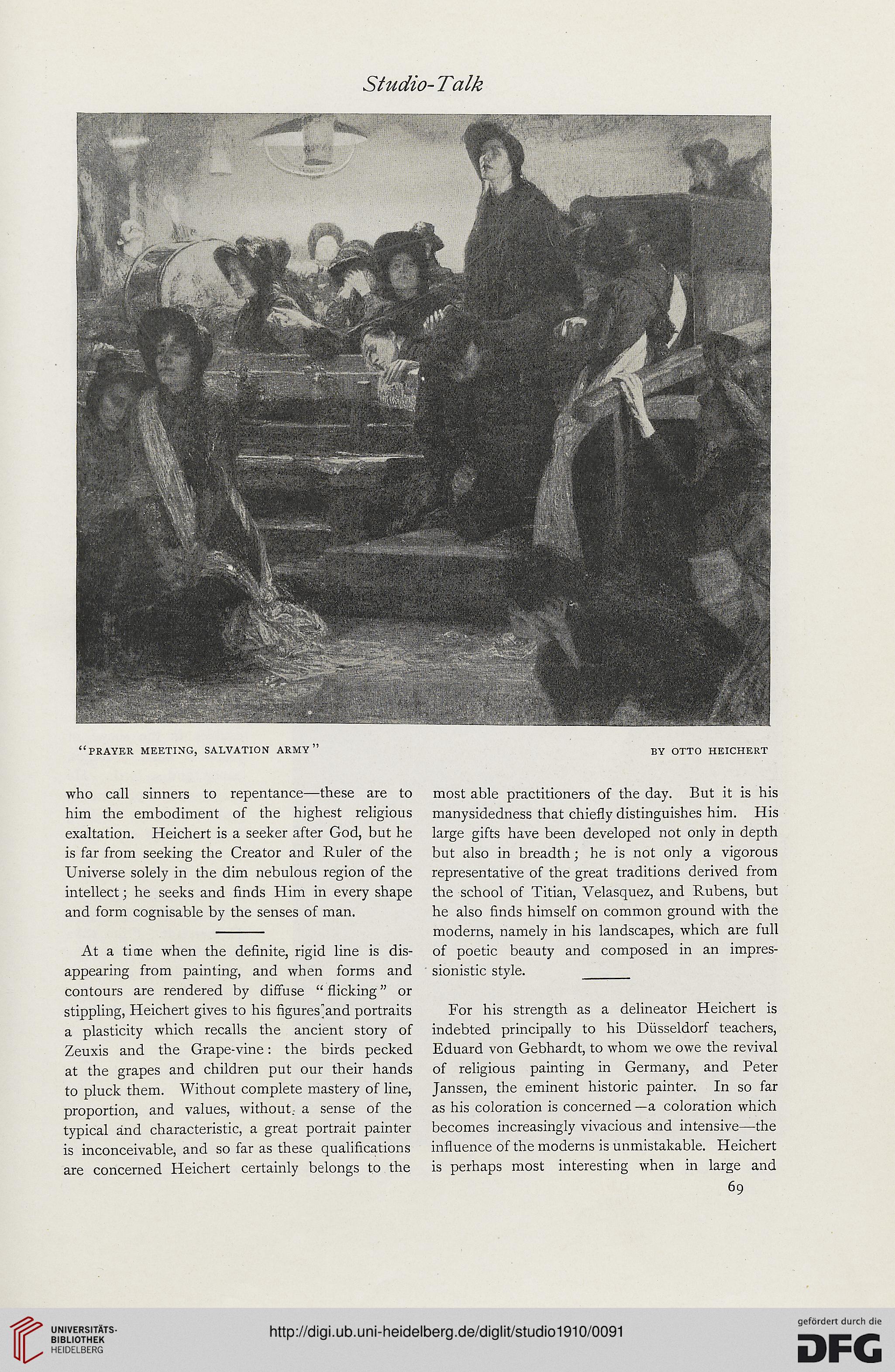Studio-Talk
"prayer meeting, salvation army" ey otto heichert
who call sinners to repentance—these are to most able practitioners of the day. But it is his
him the embodiment of the highest religious manysidedness that chiefly distinguishes him. His
exaltation. Heichert is a seeker after God, but he large gifts have been developed not only in depth
is far from seeking the Creator and Ruler of the but also in breadth; he is not only a vigorous
Universe solely in the dim nebulous region of the representative of the great traditions derived from
intellect; he seeks and finds Him in every shape the school of Titian, Velasquez, and Rubens, but
and form cognisable by the senses of man. he also finds himself on common ground with the
- moderns, namely in his landscapes, which are full
At a time when the definite, rigid line is dis- of poetic beauty and composed in an impres-
appearing from painting, and when forms and sionistic style. _
contours are rendered by diffuse " flicking" or
stippling, Heichert gives to his figures'and portraits For his strength as a delineator Heichert is
a plasticity which recalls the ancient story of indebted principally to his Diisseldorf teachers,
Zeuxis and the Grape-vine : the birds pecked Eduard von Gebhardt, to whom we owe the revival
at the grapes and children put our their hands of religious painting in Germany, and Peter
to pluck them. Without complete mastery of line, Janssen, the eminent historic painter. In so far
proportion, and values, without, a sense of the as his coloration is concerned —a coloration which
typical and characteristic, a great portrait painter becomes increasingly vivacious and intensive—the
is inconceivable, and so far as these qualifications influence of the moderns is unmistakable. Heichert
are concerned Heichert certainly belongs to the is perhaps most interesting when in large and
69
"prayer meeting, salvation army" ey otto heichert
who call sinners to repentance—these are to most able practitioners of the day. But it is his
him the embodiment of the highest religious manysidedness that chiefly distinguishes him. His
exaltation. Heichert is a seeker after God, but he large gifts have been developed not only in depth
is far from seeking the Creator and Ruler of the but also in breadth; he is not only a vigorous
Universe solely in the dim nebulous region of the representative of the great traditions derived from
intellect; he seeks and finds Him in every shape the school of Titian, Velasquez, and Rubens, but
and form cognisable by the senses of man. he also finds himself on common ground with the
- moderns, namely in his landscapes, which are full
At a time when the definite, rigid line is dis- of poetic beauty and composed in an impres-
appearing from painting, and when forms and sionistic style. _
contours are rendered by diffuse " flicking" or
stippling, Heichert gives to his figures'and portraits For his strength as a delineator Heichert is
a plasticity which recalls the ancient story of indebted principally to his Diisseldorf teachers,
Zeuxis and the Grape-vine : the birds pecked Eduard von Gebhardt, to whom we owe the revival
at the grapes and children put our their hands of religious painting in Germany, and Peter
to pluck them. Without complete mastery of line, Janssen, the eminent historic painter. In so far
proportion, and values, without, a sense of the as his coloration is concerned —a coloration which
typical and characteristic, a great portrait painter becomes increasingly vivacious and intensive—the
is inconceivable, and so far as these qualifications influence of the moderns is unmistakable. Heichert
are concerned Heichert certainly belongs to the is perhaps most interesting when in large and
69




